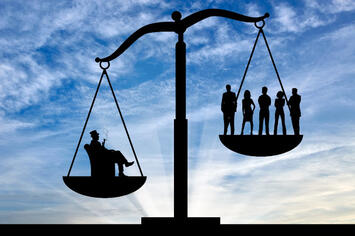
My father, a retired AME Church pastor, on occasion would start a sermon with a story about a pastor preaching a particularly fantastic sermon. The pastor was heaped with praise by his congregants after service. The following Sunday he preached the exact same sermon, to the puzzlement of the church members. The Sunday after that he did the same thing, and church deacons decided to talk to the pastor after service. “Pastor,” they said, “today makes three consecutive Sundays you’ve preached the exact same sermon. How long do you intend to keep doing this?” The pastor replied, “I’ll move on when the church members start living the lessons of the message.”
I’m about to apply the same approach to American metro inequality discourse.
It wasn’t that long ago – 2008, with the election of President Barack Obama – that the issue of economic inequality in America was thought to have been overcome. The nation had elected its first Black president and it was viewed as evidence that perhaps our nation was ready to enter a “post-racial” era. It was a demonstration of our commitment to the ideal that “all (wo)men are created equal.”
But that didn’t last long.
The fallout from the financial crisis and Great Recession over the ensuing years revealed the unequal nature of economic recovery. Gaps widened between the nation’s haves and have-nots: knowledge economy coastal cities versus the rural hinterlands; sunny locations promoting affordability and lifestyle versus gritty manufacturing-based cities. And it wasn’t only inter-regional inequality that was exposed. Intra-regional inequality, or the way we view differences in the quality of life of people within the same region, became more apparent. It refreshed concerns about who was thriving in the new American economy, and who wasn’t. The resentment among white working-class voters that pushed Donald Trump into the White House in 2016 added another layer to inequality discourse.
More recently, concerns of inequality hit another fervent peak in 2020, when the tragic deaths of George Floyd, Ahmad Arbery and Breonna Taylor were protested by people worldwide. Inequality discourse probably reached a peak in the summer of 2020. Since then it’s faded considerably as the nation turned its attention to other important matters like surviving the Covid pandemic, the January 6 insurrection, mass shooting tragedies, the war in Ukraine, the reversal of Roe v. Wade, obscenely high gas prices and existential threats to our system of government.
Racial, economic and social inequality, particularly in our nation’s cities, hasn’t disappeared. At a minimum inequality levels remain the same, and perhaps widened. If anything, our nation has become much better at identifying inequalities and their impact on American society, but no better at all at resolving it.
The Covid pandemic was a case study in how America identifies inequality yet failed to address it. Early in the pandemic we recognized that people of color were hospitalized and dying from Covid at substantially higher rates than whites, even when controlled for economic factors. We knew that the divide between the professional class that had the ability to weather the pandemic working from home, and the service class that was urged to work in direct contact with the public to keep the economy moving, was largely a divide between whites and people of color.
Read the rest of this piece at Corner Side Yard Blog
Pete Saunders is a writer and researcher whose work focuses on urbanism and public policy. Pete has been the editor/publisher of the Corner Side Yard, an urbanist blog, since 2012. Pete is also an urban affairs contributor to Forbes Magazine's online platform. Pete's writings have been published widely in traditional and internet media outlets, including the feature article in the December 2018 issue of Planning Magazine. Pete has more than twenty years' experience in planning, economic development, and community development, with stops in the public, private and non-profit sectors. He lives in Chicago.
Photo source: quillette.com












